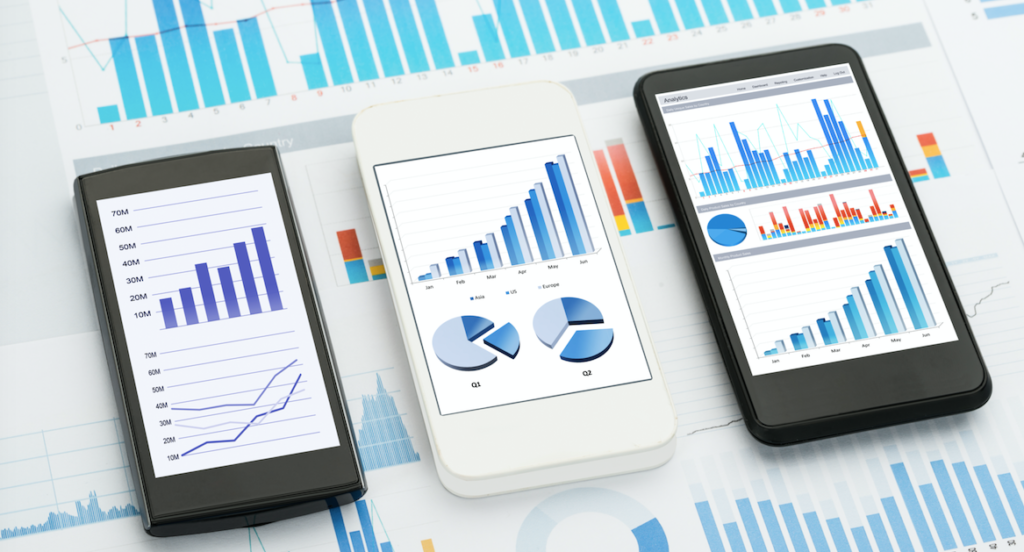Success isn’t just about creating a great app – it’s about continuously refining and optimizing it based on real user data. This is where product analytics comes into play. Product analytics is the cornerstone of informed decision-making for mobile app developers and product managers. By understanding user behavior and preferences, you can tailor your app to meet their needs, enhance their experience, and drive higher engagement. In this blog post, we’ll delve into essential tips and techniques to harness the power of product analytics for your mobile app’s triumph.
1. Define Clear Objectives and Key Metrics
Before diving into analytics, establish clear objectives for your mobile app. Are you aiming to increase user engagement, drive purchases, or improve onboarding? Once objectives are defined, identify key performance indicators (KPIs) that align with those goals. These could include metrics like daily active users (DAU), retention rate, conversion rate, and average session duration. Setting these parameters ensures you’re tracking data that directly impacts your app’s success.
Knowing your objectives also enables you to focus on the relevant user actions. For instance, if your goal is to boost purchases, tracking metrics related to the user journey leading to a purchase, such as the number of items added to the cart and the checkout process’s completion rate, becomes paramount.
2. Choose the Right Analytics Tools
Selecting the right analytics tools is crucial. Google Analytics and Firebase Analytics are popular options, offering features like user tracking, event logging, and conversion tracking. Mixpanel and Amplitude are also powerful choices, providing advanced segmentation and funnel analysis. Opt for tools that align with your app’s complexity and data needs.
These tools help you collect data and offer insights into user behavior patterns. For instance, you can see which features are most commonly used, which screens users spend the most time on, and where they tend to drop off. This information can guide your decision-making in terms of feature improvements and user interface enhancements.

3. Implement Event Tracking
Event tracking allows you to monitor specific user actions within your app. These actions could be anything from signing up and making a purchase to clicking on certain buttons. Define and implement events that provide insights into user behavior. For instance, if you’re running an e-commerce app, track “Add to Cart” and “Checkout” actions to understand user conversion patterns.
Event tracking provides a granular view of user interactions, helping you identify pain points and areas of success. If users are frequently triggering an event tied to a particular feature, it indicates its popularity. Conversely, if an event related to a key action isn’t being triggered often, it might signal the need for improvements or guidance within the app.
4. Segment User Data
Not all users are the same, so treat them differently in your analysis. Segment user data based on demographics, behavior, or usage frequency. This segmentation enables you to identify trends and preferences among different user groups, leading to more targeted optimizations.
Segmentation is especially beneficial when introducing new features or updates. You can tailor your communication strategies by analyzing how different user segments respond. For instance, power users might appreciate more technical details, while casual users might respond better to simplified explanations.
5. Utilize User Funnels
User funnels help you visualize the user journey from start to finish. By tracking how users move through various stages of the app – from signing up to completing a specific action – you can identify where users drop off and optimize those points for a smoother experience. For instance, if your app has a multi-step onboarding process, funnel analysis can highlight steps causing user abandonment.
Funnels reveal bottlenecks and roadblocks in user flow. They clearly show where users abandon the app or fail to complete desired actions. This knowledge is invaluable for streamlining the user experience and maximizing conversions.
6. Monitor User Retention
User retention is a critical metric that measures how many users continue engaging with your app over time. A high download rate means little if users don’t stick around. Analyze retention rates to understand the longevity of user interest. If retention is low, consider enhancing onboarding, offering incentives, or sending personalized notifications to re-engage users.
Understanding user retention patterns helps you identify whether your app’s value proposition is strong enough to keep users coming back. If retention drops shortly after users download the app, it could signal that your initial onboarding experience needs improvement.
7. A/B Testing for Optimization
A/B testing involves comparing two versions of a feature to determine which performs better. Test variables like UI layout, button placement, or even the wording of a call-to-action. A/B testing provides data-backed insights to make informed decisions about which version resonates more with your users.
A/B testing helps eliminate guesswork from design decisions. It ensures that the changes you implement are based on actual user preferences, increasing the likelihood of positive outcomes.
8. Cohort Analysis
Cohort analysis groups users who started using your app within the same timeframe. It helps track user behavior changes over time. For instance, you can analyze how different user cohorts respond to updates or feature launches. This aids in refining your app’s offerings to meet evolving user preferences.
Cohort analysis is essential for understanding the long-term impact of changes you make to your app. It enables you to see whether updates lead to sustained improvements or if there’s a temporary spike in engagement.
9. Feedback Integration
Combine quantitative data with qualitative insights. Integrate user feedback through surveys or reviews to better understand user sentiment. Sometimes, user behavior data might reveal the “what” but not the “why,” and qualitative feedback fills in that gap.
User feedback provides context to the numbers. It offers insights into user motivations, pain points, and desires that analytics might not reveal solely. This combination of data sources paints a comprehensive picture of user experience.
10. Privacy and Ethical Considerations
While diving into analytics, prioritize user privacy. Ensure compliance with data protection regulations and obtain user consent for data collection. Strive for transparency in explaining what data is collected and how it benefits users. Maintaining ethical data practices fosters trust and safeguards your app’s reputation.
Respecting user privacy is a legal requirement and a moral responsibility. Being transparent about data usage builds user trust, which is pivotal for long-term retention.
In conclusion, product analytics is the compass guiding your mobile app’s success. By defining objectives, selecting appropriate tools, and implementing robust tracking mechanisms, you can unlock insights that drive user engagement, satisfaction, and your app’s growth. Remember that analytics is not a one-time endeavor; it’s an ongoing refinement and optimization process. Regularly analyze data, iterate on insights, and keep pace with evolving user preferences. With the right blend of data-driven decision-making and user-centric design, your mobile app can stand out in the competitive app market.


